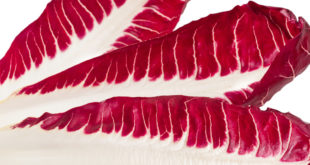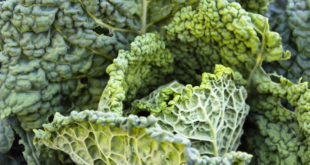- Asparagus. Store at room temperature in a glass of water with the stems down. The asparagus will keep for over a week. Change the water mid-week.
- Avocado. Store at room temperature until ripe and then transfer to the refrigerator to store. If you eat only half of an avocado, store the other half in the refrigerator with the pit in. It will keep longer.
- Basil. Storage in the refrigerator can brown the leaves and speed up basil’s demise. Store it at room temperature with stems places in a jar of water. Large bunches can double as a centrepiece.
- Beets. Greens draw moisture out of root vegetables. Remove them and store separately in the refrigerator for up to a few days. Store the beets in the crisper drawer for up to 10 days.
- Bell peppers. Store these in a cool place, however, cold temperatures in the refrigerator can cause them to break down faster. If you don’t have a cool spot for storage, in the refrigerator peppers will last for a few days.
- Bok choy. Store in the refrigerator for up to a week in a cloth produce bag.
- Broccoli. Broccoli perishes quickly. Store it in the refrigerator in a cloth produce bag and eat within three or four days.
- Brussels sprout. Like broccoli, brussels sprout perish quickly. Store them in the refrigerator in a cloth produce bag and eat within a few days. I can sometimes buy them on the stalk but can’t quite fit that in my refrigerator so I try to use them up almost immediately when I buy them this way.
- Cabbage. Store loose in the crisper drawer and use within about two weeks.
- Carrots. Remove the greens and store in the refrigerator in a cloth produce bag or loose in the crisper drawer. They will keep for a week or longer.
- Cauliflower. Store this loose in the refrigerator crisper drawer. Use it within a week.
- Celery. Put stalks in a jar of water and leave it on the kitchen counter. If you store your celery this way, change the water mid-week. Or store your celery in the refrigerator. I don’t bother putting it in a cloth produce bag but you can if you prefer.
- Corn. Within hours of being picked, corn loses up to 40 percent of its sugar. Eat it as soon as you buy it. If you must store it, put it in a warmer part of the refrigerator in the husk for up to three days.
- Cucumber. The refrigerator is too cool for these and can damage the texture. They do best around 10°C — much warmer than the refrigerator. If you do store them in the refrigerator, eat them within a few days.
- Dark leafy greens. If you like to prep sturdy greens (chard, collards, kale and spinach) in advance, remove the stems, cut, wash and spin dry in a cloth produce bag. Store them in the same now-damp but not wet cloth produce bag. Use them up within a week.
- Eggplant. Store at room temperature. Colder temperatures can damage them. They will keep for about a week.
- Green beans. These perish quickly so gobble them up soon after buying. Store them in a cloth produce bag in the refrigerator for about three days. Cut off the stem only, not the edible end. This reduces waste and saves time.
- Herbs. Store in cloth produce bags in the refrigerator for up to a week (except for basil—see basil above).
- Hot peppers. Like bell peppers, hot peppers do better outside of the refrigerator. Store jalapeños, poblanos and serrano chiles at room temperature. If you will use them within a few days, you can keep them in the refrigerator.
- Lettuce. Store lettuce in the refrigerator. Buy whole heads of lettuce (Romaine, butter lettuce, green leaf lettuce, red leaf lettuce), not salad mix and prep it the same way you prep dark leafy greens. Cut, wash, spin, then store in cloth produce bag in the refrigerator for up to a week.
- Leeks. Store them in the refrigerator for up to two weeks.
- Mushrooms. Store them cloth produce bag in the refrigerator. Use up these delicate fungi soon after purchase. Some varieties will keep for up to a week.
- Onions and shallots. Store them in a cool, dry place but not in the refrigerator, as the cold temperature can damage the flavour and texture.
- Potatoes. Store in a cool but not cold place and keep them away from ethylene producing fruit and strong-smelling garlic, onions and leeks, which can impart their flavours onto potatoes. Also, keep them away from light to avoid greening.
- Pumpkin, winter squash. They don’t do well in the refrigerator. Store at room temperature.
- Radishes. Remove the greens and store separately for a few days in the refrigerator. Store the radishes themselves in a cloth produce bag, also in the refrigerator, for up to two weeks.
- Root vegetables. Store beets, carrots, parsnips, rutabaga and turnips at cold temperatures in the refrigerator. If you have a root cellar, store them there for the long haul.
- Scallions (aka green onions). Store them in a cloth produce bag in the refrigerator and use within a week.
- Sprouts. If you make these yourself, wait until they have completely dried from their final rinse before you store them in either a cloth produce bag, glass jar or glass container. Store purchased sprouts in the same manner.
- Summer squash (such as zucchini). This perishes quickly. Store in the refrigerator for up to several days.
- Sweet potatoes. Like regular potatoes, store in a cool place but do not refrigerate.
- Tomatoes. Store at room temperature. Do not refrigerate! Cold temperatures result in mealy tomatoes devoid of flavour.
Tags cooking tips
 bfc.green Promoting Green Lifestyle
bfc.green Promoting Green Lifestyle


